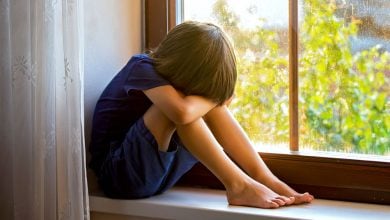
One of your children is not like the others…
They’re loud and busy and active all the time—and you’re just not. Unless you’re intentional in meeting their needs, you can start to feel worn out, and they can start to feel like the black sheep.
In this episode, Carol and Anne help you create space for a higher-energy, extroverted child in a family of lower energy. With some simple tips and activities, you can make sure all of you have room to thrive.
This week’s Parenting Practice
If you are a lower-movement family, assess how well are you supporting your higher-movement child or children who are the exception to the family movement. Use the ideas in the episode so your child can get what they need and enjoy being part of your family.
Transcript of podcast episode
Carol: …also sends a really big message, “I know who you are, I honor your needs, and I’m supporting you.” That’s a big deal.
Anne: Validating that movement.
Carol: Yeah. Welcome to The Child Whisperer Podcast, I’m your host, Carol Tuttle, author of the bestselling parenting book, The Child Whisperer. I’m with my co-host, Anne Tuttle Brown. Last week, we mentioned you could have a higher movement family, because most of the family members are Type 1 and Type 3 Energy Types, and you could have one or two children that are either Type 2 or Type 4.
Let’s look at the opposite of that. What if you are a lower movement family? The majority of the family members are either Type 2 or Type 4 Energy Types, and there’s one or two children that are high energy, either Type 1 or Type 3. And some of the challenges presented with that, and how do you support that child, so they’re not forced to keep catering to this lower movement, and constantly being told to settle down, quiet down, calm down, stop moving, all of the feedback that they can get when the majority of the family members are not able to relate to their approach in life.
Anne: “You exhaust me, you’re crazy.”
Carol: Yeah, that can…
Anne: “Why can’t you be like your brother?”
Carol: It’d be easier for the lower movement child in the high movement family to just go kind of…
Anne: “Yeah, I’m leaving.”
Carol: Yeah. Go off.
Anne: “I don’t need you people.”
Carol: And say, “I’m not going to bother with you because none of you are even paying attention to me.” Where I do think it’d be more challenging for a high movement child that’s surrounded by lower movement Energy Types.
Anne: Yeah, because you can’t just go to your room by yourself and get your needs met.
Carol: They’d be getting a lot of corrections…
Anne: That’s a good insight.
Carol: …from the family members. So how much is that family member being told to try and change who they are?
Anne: So if you haven’t done it yet, write down all the Types of your family. You can even throw in the secondaries if you’ve got them and evaluate…
Carol: Yeah, just how many Type 1s and Type 3s do you have, compared to Type 2s and Type 4s. If you’ve got a family of five, and three of them are higher movement and two are lower movement, you’re considered a higher movement family. You may be balanced, but you’re going to notice pretty immediately to say, “Oh, that’s why that child is always…they just don’t fit in with the rest of us.” And they can take on that black sheep perception that “I don’t fit with my family. I’m different than my family.”
Anne: Yeah. And your family is their point of reference to what’s accepted and, you know, and still they get older, they’re like, “Why am I not like everyone else?” And they start to have a shameful reference about themselves.
Carol: Yeah, I’ve heard from hundreds, and hundreds, and hundreds of adults that have given me that feedback once they recognize that “Oh, that was the variable that was playing out in my family that caused me to believe that there was some flaw or something wrong with me, when really, I just didn’t fit in with everybody else in their approach to life.”
So you can remove that sort of scar that will have to be healed later in life by being mindful of this. So, we’ve got some examples from mothers that shared their experience that are lower movement families with a high movement child, and what they’re being mindful of, which I think are excellent references.
Anne: These stories are taken from The Child Whisperer Facebook group. If you’re not a member of that, we invite you to go join. Lots of great discussion going on over there, and if you are on there, thanks for being a part of the community. And this family, there are four members of the family, two parents and two children. The parents are both Type 4s. The youngest is a Type 4. The oldest daughter is a 3, with a secondary 1, so an extra high movement.
And she says, “We’ve had to be very conscious of everyone’s needs, or my eldest can feel she’s different, and not in a good way. She knows she operates differently than everyone else. If we are mindful of everyone’s needs, it’s great. But, the needs are so different, it could be challenging if we aren’t paying attention, but we know, so we create the correct space for everyone.”
And I think that’s the biggest first step is awareness, and just kind of, you watch their emotions like, “Okay, that activity was successful, that wasn’t. And why? And how can we make adjustments?” Or, “Sitting at home all day is not supportive for you. How can we make adjustments?”
Carol: Or is there a place in the home they can go where they can turn up the music or get some activity? The same mom posted a video of her daughter punching an inflatable punching bag.
Anne: That was…it’s knocked down, it’s coming back up. Yeah.
Carol: Yeah. She said it’s the best $12 she’d ever spent. So now we need to be in a place in the home where she could do that without being an interference to everyone else. And it was…
Anne: Well I loved what she said when she shared that in the Facebook group. She said, “Well, it’s either the punching bag or one of us in the family.” Like, it’s taking that energy, and she’s able to…
Carol: That aggression that needs to be expressed.
Anne: Yeah, and it’s having an object that responds to her movement right there with her.
Carol: It also sends a really big message. “I know who you are, I honor your needs, and I’m supporting you.” That’s a big deal.
Anne: Validating that movement.
Carol: Yeah.
Anne: We have another story here. The parents are a Type 2, and a Type 4 and both their kids are Type 1, and she even shares that people have thought it’s ironic that two people that are so calm and chill could have two very active, silly kids. She says her biggest challenge is on days when they’re stuck inside because of weather. She loves when she can send them out to play, they play with each other, the neighborhood friends. And I think siblings are such a great…when they’re two high movement siblings, that’s a great combo.
And she has a couple of tricks that she shares. One is having a storytime. “We have a mix of interactive books where they can be up and moving and being silly, and ones where they sit down and listen quietly. Or, I will play with them separately so I can spend one-on-one time with them.” She’s a Type 2 mum, I think that’s a great trick, just be able to go, “Okay, I’m going to spend time with you, now I’m going to go spend time with you and have that more intimate connection.”
Carol: Another need for a high movement child, whether they’re a Type 1, Fun-loving child or a Type 3, Determined child, is to get out of the house. Get out and about. Your Type 1 needs social interaction with a variety of people. Your Type 3 needs an opportunity to explore and to experience their world in a physical way.
Well, if you’re more of a homebody, and not as eager to go out and about with your high movement children, who do you know in your world that is willing to do that? Maybe a grandparent. That’s the perfect setup for a high movement grandparent. They’re not interested in coming over and just hanging around your house. They’d rather go do something with your children.
Anne: Hey, is that you? Are you a high-movement grandparent?
Carol: Well, you noticed. I get a little more engaged once they get to the age they can go out and do stuff.
Anne: That’s true. Yeah. One thing that I…
Carol: Or if I do come over, I want to do something with them. I want to play a game. I want to …
Anne: And you like creating activities for them to come and do and engage in, be more interactive.
Carol: Yes. Maybe you need to hire a responsible teenager that goes and takes them on an outing. Maybe they need to go to the…
Anne: Or hire a teenager to come over and play with them. I’ve done that, where I am at home…
Carol: Yeah, but I’m talking about getting out, though.
Anne: Yes. Okay.
Carol: And you don’t feel like going anywhere.
Anne: That’s true. I like that.
Carol: As much as your child may want to go somewhere.
Anne: Or go to a place where… Like, I’ve gone…when my Type 3 was, you know, ages 2 and 3, we’d go to the mall. They have a little play place, and it’s, you know, all enclosed. It’s small enough where I could sit. I could look on my phone, I could catch up on emails, and she would make friends, and she would just run around, and be totally safe and secure. And it was a little reprieve, and I knew she was just loving it because she was being active.
Carol: And if you didn’t want to go to the mall and sit there, there is a reputable babysitter that could take them to the mall and sit there. Do you see what I’m saying?
Anne: Yeah. Oh my gosh, my daughter loves… And the social interaction there, and they’re like, “I get to go out, and I’m leaving Mom and I’m a big kid.” Like, they love that. Or getting them involved in…
Carol: Or maybe they’d rather not go with you.
Anne: Yeah. Yes, I know.
Carol: Quite honestly, it’s like, “Could you send me with someone else please?”
Anne: Yeah, they know it.
Carol: There are other ways to do it, though. Do you have a friend with children that your child connects with readily that’s a higher movement parent, that’s even a Child Whispering parent? You could swap. Let your low movement child come to my house, and my high movement child will go with you. Maybe you have the opposites.
Anne: And we’ll sit and read books together.
Carol: Who is a family you know that has… This is where Joe, our parent of last week’s question and Diana, the parent of this week’s scenario need to…if they lived in the same area, they could just swap kids for a day.
Anne: Yeah, swap kids for a day. I like that idea. Well, you’ve probably got, you know, between your siblings and cousins, you know, you’ve got some connections you can use.
Carol: Yeah, you’ve got to be creative than that. You can’t be the person to supply every little tiny need for your child.
Anne: But you do need to be proactive in setting it up, and making it happen.
Carol: Yes. You’re responsible for making sure that those needs are met.
Anne: I pride myself on being a very good playdate arranger for my Type 3 child…
Carol: Good for you.
Anne: …and I say, “I’m going to make this happen. I’m going to invite friends over; I’m going to text other parents to help set that up.”
Carol: You know your day goes better for it. You are proactive in that; you get things going for her. You keep her busy because she’s going to want you to play with, you know, she’s asking you constantly to do something with her.
Anne: And that can, as a Type 2, you know, you do need your quiet time. And I’m more available and emotionally ready to play with her and engage with her fully when I have had a break. And then that’s the case for all parents, whatever type you are. When your emotional needs are met, whether it’d be social or some quiet time, connection time, a physical outlet, or that solitude as a Type 4, then you can re-engage with your kids at your very best.
Carol: This week’s parenting practice, if you are a lower movement family, is to assess how well are you supporting this higher movement child or children in your family that is the exception to the family movement, that their needs are being met? We’ve given several ideas to support you. What idea can you put into action, so they are benefitting from that and feeling loved and honored, and they really enjoy being a part of this lower movement family? Instead of rolling their eyes going, “My family never wants to do anything. They’re so boring.”
Anne: You have the opposite, “I’m getting outta here. I’m leaving.” Like…
Carol: That’s right.
Anne: “When I’m 16, I’m moving out.”
Carol: Yeah. “I’m going to go make things happen in my world.” So, thank you for being a Child Whispering parent that you even have this knowledge to help make these changes. So few parents don’t, and their children are left to make personal judgments towards themselves that are inaccurate, and you’re preventing that. Good for you.
Thanks for listening. For more support, go to thechildwhisperer.com where you can purchase the book, subscribe to our weekly parenting practice email, and find a transcription and audio of “The Child Whisperer” podcast.
Anne: If you’re listening on iTunes, thank you for leaving your review. If you have a parenting question, please send it to [email protected].



